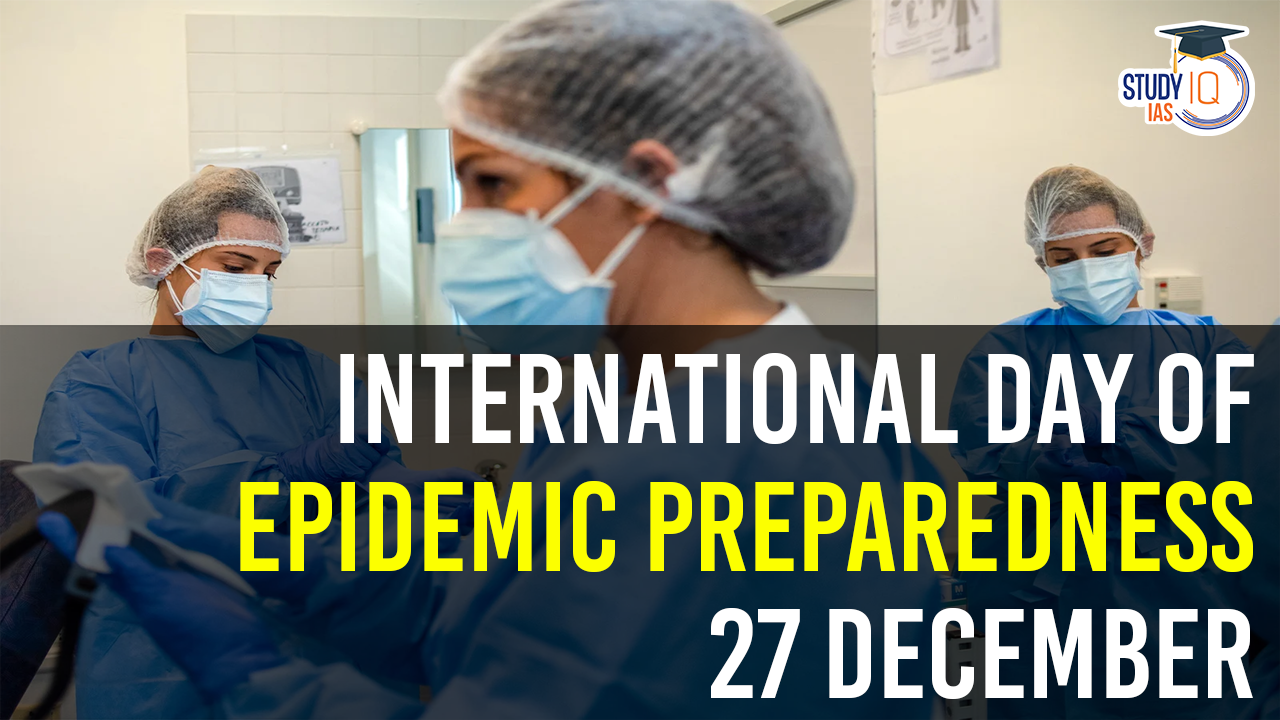Table of Contents
Annually, on December 27th, people worldwide come together to commemorate the International Day of Epidemic Preparedness. This crucial day serves as a poignant reminder of the constant risk posed by infectious diseases and underscores the urgent necessity for proactive measures to confront them. Against the backdrop of the ongoing COVID-19 pandemic, which has laid bare the vulnerabilities of our interconnected global community, the significance of epidemic preparedness has reached unprecedented levels.
We’re now on WhatsApp. Click to Join
International Day of Epidemic Preparedness 2023 Origin
The inaugural International Day of Epidemic Preparedness took place on December 27, 2020, aiming to promote the significance of preventing, preparing for, and collaborating against epidemics.
In December 2019, the highly contagious Coronavirus pandemic emerged in China. As infection rates surged and the number of affected individuals grew, global health systems faced unprecedented strain. The challenges extended beyond a scarcity of healthcare professionals, beds, and ventilators; critical supplies like hand sanitizers and surgical masks also faced shortages at one point.
Responding to these challenges, the UN General Assembly tasked the World Health Organization (WHO) with designating December 27 as the International Day of Epidemic Preparedness. This designation aimed to underscore the imperative for preparedness, cooperation, and proactive measures in epidemic prevention.
What is an Epidemic?
An epidemic signifies the swift proliferation of a disease within a population over a brief period. It commonly involves contagious ailments like influenza, vector-borne infections such as malaria, water-borne diseases like cholera, and sexually transmitted diseases like HIV/AIDS.
Epidemic Triggers
The occurrence of an epidemic results from the host’s reduced immunity to an existing or newly emerged pathogen, falling below the endemic equilibrium. This happens when the transmission threshold is surpassed.
Epidemic Declaration
Official recognition of an epidemic is contingent upon the infection rate surpassing a specific threshold of disease prevalence. The threshold varies among different diseases, marking the point at which an epidemic is formally declared.
Learning from the Past, Preparing for the Future
The establishment of the International Day of Epidemic Preparedness reflects the lessons gleaned from past pandemics, particularly the ongoing COVID-19 crisis. Through collaborative efforts, we can construct a world better prepared to face the challenges of tomorrow. Let us commit to concrete steps in strengthening our defenses against future epidemics, ensuring the health and well-being of generations to come.
International Day of Epidemic Preparedness 2023 Significance
- Government Responsibility: Emphasizes the primary role of governments in tackling epidemics.
- Awareness Generation: Aims to educate and prepare citizens through awareness-raising activities.
- Detection and Response Systems: Advocates for the development of systems to prevent, detect, and respond to infectious disease outbreaks.
- Strong Healthcare Systems: Encourages the creation of resilient healthcare systems to support vulnerable populations.
- Information Sharing: Promotes collaborative information sharing at local, national, regional, and global levels.
- Vaccination and Safety: Includes measures to spread information about vaccinations and safety precautions.
- Better Preparedness: Seeks to enhance future response capacities, ensuring better preparedness for health challenges.
International Day of Epidemic Preparedness 2023 UPSC
Annually observed on December 27th, the International Day of Epidemic Preparedness, established in 2020 amid the global COVID-19 crisis, highlights the critical need for global readiness against infectious diseases. Originating from the challenges posed by the 2019 Coronavirus outbreak, the day underscores the importance of prevention and collaboration. It defines an epidemic as the rapid spread of diseases and emphasizes triggers linked to host immunity and transmission thresholds. The day’s significance lies in emphasizing government responsibility, fostering awareness, advocating for robust healthcare and detection systems, promoting information sharing, and encouraging vaccination dissemination, all aimed at enhancing future response capacities for global health challenges.


 Places in News for UPSC 2025 for Prelims...
Places in News for UPSC 2025 for Prelims...
 Waqf Act (Amendment) 2025: Key Highlight...
Waqf Act (Amendment) 2025: Key Highlight...
 World Creativity and Innovation Day 2025...
World Creativity and Innovation Day 2025...






















